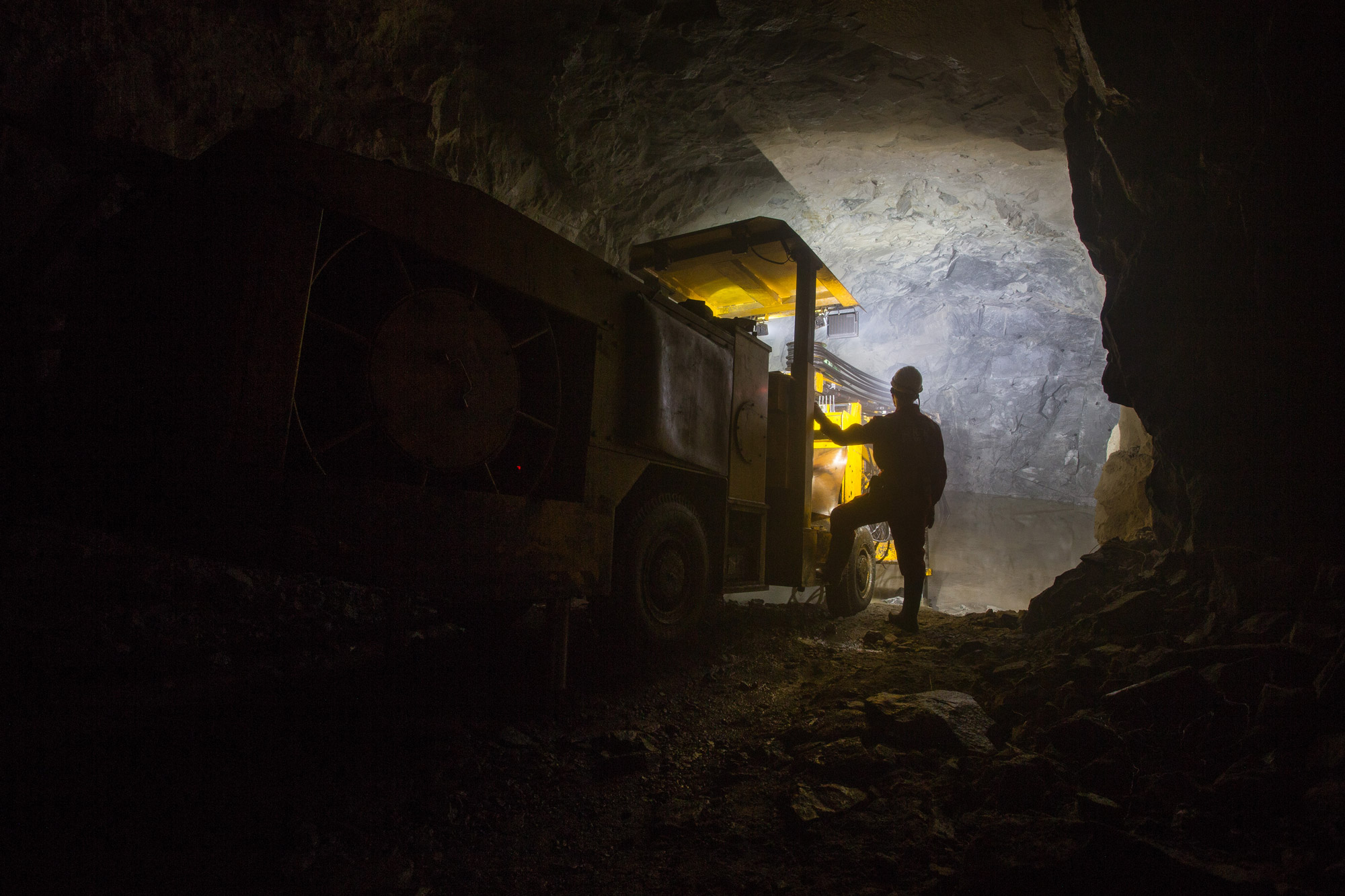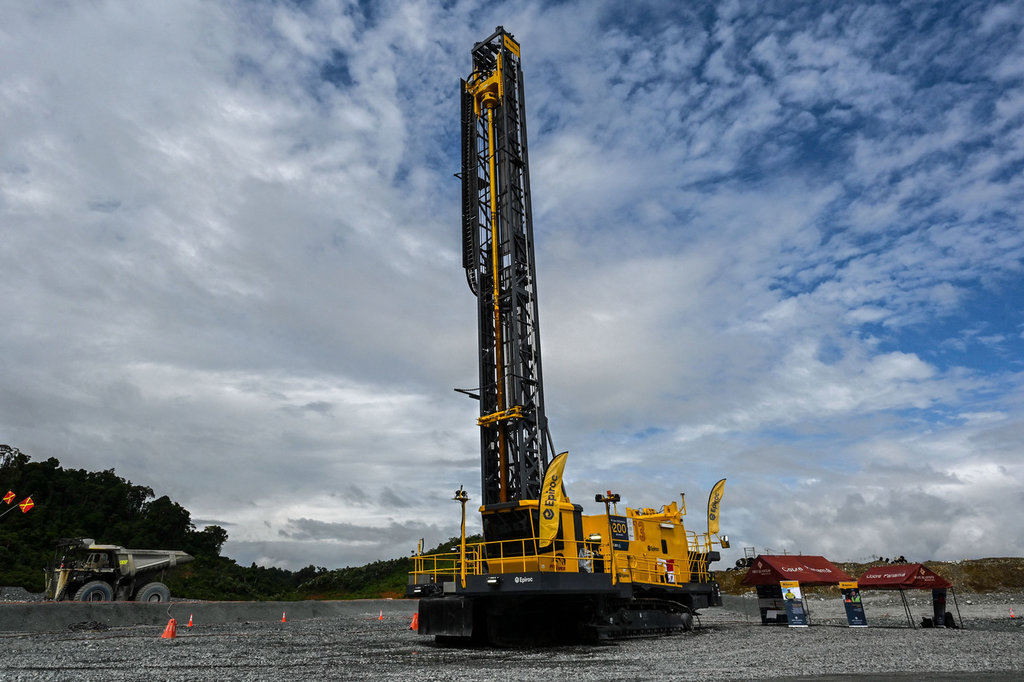Interview
The automated devices promising big change in mining
Nnamdi Anyadike speaks to Sweden’s Epiroc about the rising tide of automated devices and how they affect mine owners and workers.

Sandvik drills at work. Credit: Mishainik via Shutterstock
Automation is on the rise in the mining industry with more and more of the sector’s operations now covered by uncrewed machinery. A recent report by SNS Insider on mine automation forecasts a rise in its valuation of the market, from $4.84bn in 2022 to $8.77bn by 2030.
Mining automation has increased the efficiency of mining operations worldwide. It allows companies to extract minerals more quickly and accurately, resulting in increased productivity and profitability. By using predictive analytics, companies can anticipate equipment failures and perform maintenance proactively, reducing downtime and improving the lifespan of their equipment.
One of the world leaders in the supply of mine automation equipment is the Swedish based Epiroc. The company started beefing up its portfolio with the acquisition in late 2022 of Remote Control Technologies, an Australian provider of automation and remote-control solutions for mining customers.
Following this acquisition, Epiroc has concluded a number of equipment supply agreements. These include support provided to Roy Hill, an iron ore mining project in the Pilbara region of Western Australia, that in March 2023 had entered the final stage of creating its autonomous haulage system (AHS). This is part of an ongoing collaboration between the two companies, established in 2020.
The AHS project will convert the Australian miner’s mixed fleet of 96 haul trucks to driverless operation, and in the process create the world’s largest autonomous mine. The expansion will see AHS truck numbers grow steadily from March 2023, throughout the year. The fleet will eventually comprise 54 Caterpillar trucks and 42 Hitachi trucks. In addition, more than 200 ancillary vehicles will interact with the autonomous haul trucks.
African mine companies upgrade with automation
Epiroc has also won a large order for surface mining equipment from Société Nationale Industrielle et Minière (SNIM) in Mauritania, one of Africa’s largest iron ore producers. The mining company ordered a package of Epiroc Pit Viper 351 drill rigs with advanced automation solutions that will be used at the new F’Derick mining site. Epiroc will, in addition, provide service supervision and spare parts. The Pit Viper 351 rigs, manufactured in Texas will be installed with automation features including AutoDrill.
This allows for up to 100% of the hole drilling cycle to be automated
“This allows for up to 100% of the hole drilling cycle to be automated,” a company statement said. The deal includes features such as AutoLevel, which minimises the time it takes to level and de-level and hence provides more time drilling. “They will also be equipped with Epiroc’s telematics system, which allows for intelligent monitoring of machine performance and productivity in real-time,” the company explained.
In southern Mali, Epiroc is to deliver automation-ready drill rigs and LHDs for a new underground mine at the Hummingbird Resources-owned Komana site. The equipment is made up of Boomer M2 face drilling rigs, Simba M6 production drilling rigs, and Scooptram ST18 loaders. The loaders will come equipped with Scooptram Automation, which lets an operator control the vehicles tele-remotely from a safe distance. Additional automation features for the machines include Epiroc’s telematics system Certiq, which allows for intelligent monitoring of machine performance and productivity in real time, and Epiroc’s Rig Control System, RCS, which makes them ready for automation and remote control.
ABB advances plans for “fully electric mine”
Elsewhere in Sweden, technology company ABB is moving to advance its fully electric mine as the industry shifts away from diesel-powered equipment. In 2021, it launched its eMine portfolio of integrated electrification and automation solutions. The eMine vision encompasses full integration of electrification and automation, “from pit to port”, to help the industry decarbonise not only its fleet but the entire ecosystem.
The company’s systems include the eMine trolley system, in which haulage trucks transporting ores are converted to electric-diesel hybrids. This will cut diesel usage by up to 90%, according to the company, thereby reducing emissions and saving money on fuel costs. The system, which includes an overhead catenary system and a rectifier substation, will eventually move to battery-trolley hybrids.
This would replace diesel-fuelled loaders, improving air quality in underground situations.
Also in Sweden, a global engineering group Sandvik has announced plans to revolutionise the mining industry by introducing automated battery-electric loaders. This would replace traditional diesel-fuelled loaders, improving air quality in underground situations and reducing the need for ventilation. Sandvik also promotes that the loaders’ high power-to-weight ratio “means quick cycle times..
Meanwhile in the US, at Komatsu’s Arizona Proving Grounds, concept vehicles are being developed that will form the basis for future commercial autonomous and/or electric solutions. These include the company’s EVX battery proof of concept vehicle and the cab-less IAHV autonomous mining truck concept. The EVX is based on the platform of a 254-tonne payload machine.
Epiroc explains its vision
However, while the future of automated mining increasingly looks to be one of rising profitability for mine owners, automation does present a number of new challenges for the human work force. Epiroc media relations manager, Ola Kinnander, agreed to respond to a number of questions from MINE Magazine, touching on the issue of the industry’s traditional reliance on human workers and what the future holds for mine automation in general.

Epiroc Viper 351 drill rig. Credit: Luis Acosta/AFP via Getty Images
Nnamdi Anyadike: With more and more of the mining sector’s operations covered by un-crewed machinery, what challenges does this present for human workers?
Epiroc: “As mining companies are increasingly embracing automation, it of course creates a period of time when many mine workers must be trained in the new technologies. Epiroc’s experience has been that the mining companies and their workers overall have handled this very well.
There are of course challenges, but from what we can see mining companies tend to take this step by step, in a pace that works well for the workforce. Sometimes there can be scepticism from some workers in the beginning, but typically they quickly see the benefits, for example in the form of much safer and more comfortable work conditions, so from what we hear, the response tends to be very positive over time.”
Nnamdi Anyadike: Over what period of a mine’s life can a miner expect to recoup the capital expenditure on automation?
Epiroc: “This can vary greatly depending on the automation solution and the circumstances in the mine, so we cannot put a number on it, but it generally goes relatively quickly.”
Nnamdi Anyadike: Can you describe what the technological limits are to mining automation, if any, or is a totally “intelligent” unmanned mine a real prospect in the future?
Epiroc: “It is difficult to say what the future holds, but for surface mining we are getting closer to an unmanned mine. We are in the process of supporting iron ore miner Roy Hill in Australia with creating the world’s largest single autonomous mine, where almost a hundred mine trucks will be operated autonomously once the project is done.”
Will the need for “green metals” require greater automation?
The innovations of automation, as well as the creation of what Rockwell Automation calls the ‘connected mine’, are going to be crucial for the sustainable mining of the resources that will be needed to power the “green economy”. Last year, California took the radical decision to require all new cars sold from 2035 to be electric. But as the Wall Street Journal (WSJ) reported, this would have the effect of mandating that all new cars sold in the state, “must have at least 2.5 times as much copper as conventional cars today.”
Demand for “green metals” will require a substantial “gearing up” process, as well as a re-tooling and upgrading of mine industry equipment. At least initially, the hardware segment will dominated the mine automation market, in the form of trucks, equipment, plant and. Most, if not all, of the various stages of the mining process, including drilling, blasting, loading, hauling, and processing, will eventually be automated.
However, automation of mine hardware will require the rapid adoption of technologies such as artificial intelligence (AI) and robotics. These have already proved their worth in boosting production efficiency. The internet of things, meanwhile, will offer mine management access to real-time data and analytics with the help of visualisation tools.